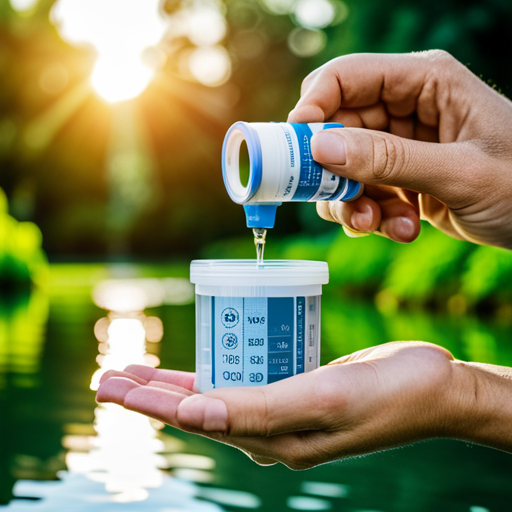Category: PFAS
-

Safeguard Your Health With Cyclopure’s Pfas Test Kit
Do you know what’s in your drinking water? If you’re concerned about the quality of your water, Cyclopure’s new PFAS test kit offers an easy and affordable solution to safeguard your health. PFAS compounds have been found in drinking water near industrial sites and military bases, and can pose serious health risks. With Cyclopure’s test…
-

Swimming In Pfas Water: Safe Or Scary?
Are you a swimming enthusiast who loves to take a dive into any water body? Well, if you’re planning on swimming in any water source, you should be aware of the potential risks of PFAS contamination. PFAS, also known as per- and polyfluoroalkyl substances, are a group of man-made chemicals that are used in various…
-

Cooking With Pfas-Contaminated Water: Safe Or Risky?
Do you ever stop to think about the quality of the water you use to cook your food? If you’re like most people, probably not. However, if you’re one of the 16 million Americans with PFAS-contaminated drinking water, it’s a question you should be asking. PFAS, a group of man-made chemicals used in a variety…
-

Washing With Pfas Water – Safe Or Risky?
Are you concerned about the safety of washing your clothes with water that contains PFAS? Per- and polyfluoroalkyl substances (PFAS) are man-made chemicals that have been used in many products for decades. Exposure to PFAS can lead to adverse health effects, with contaminated water and food being the most common sources of exposure. While washing…
-

Pfas: The Harmful Chemicals Lurking In Your Water
You may not realize it, but there could be harmful chemicals lurking in your water. PFAS, or per- and polyfluoroalkyl substances, are a group of chemicals that can be found in water supplies across the country. These chemicals are often used in products like non-stick cookware, stain-resistant fabrics, and firefighting foam, and they can cause…
-

Milk: A Pfas Contamination Concern?
Do you drink milk every day? If so, you may be concerned to learn that recent studies have shown that milk may be contaminated with PFAS compounds. PFAS, or per- and polyfluoroalkyl substances, are toxic chemicals that have been linked to a variety of health problems, including cancer, immune system dysfunction, and developmental delays. Between…
-

Pfas Contamination: Can Boiling Water Help?
Are you concerned about PFAS contamination in your drinking water? Perhaps you’ve heard that boiling water can purify it, but are not sure if it will remove PFAS toxins. Unfortunately, boiling water is not an effective method for removing PFAS contaminants and can even increase their concentration due to evaporation. In fact, PFAS contamination is…
-
The Dirty Truth About Crab: Pfas Contamination In Seafood
Are you a fan of crab meat? If so, you may want to think twice before indulging in this popular seafood dish. Recent testing by the FDA has found that 100% of canned and frozen crab meat samples tested were contaminated with PFAS, synthetic chemicals that have been linked to adverse health effects such as…
-

Distilling Away Pfas: The Most Effective Solution
Are you concerned about potential PFAS contamination in your drinking water? You’re not alone. PFAS, or per- and polyfluoroalkyl substances, are a group of man-made chemicals that can be found in various household products and have been linked to health problems such as cancer, thyroid disease, and decreased fertility. These chemicals can also accumulate in…
-

Pfas Contamination In Food: What To Know.
Are you tired of the mediocre performance of your Brita filter but still want an affordable option to upgrade your drinking water? Look no further than these Brita filter alternatives. With a variety of options available, each filter caters to specific needs, such as increased alkalinity or removal of a wide range of contaminants. By…
